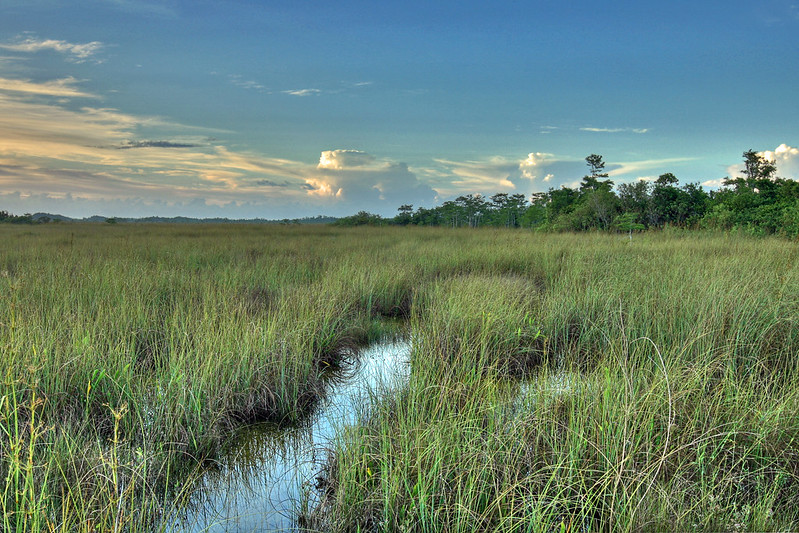Researchers at Florida International University have shown that saltwater intrusion in coastal sawgrass marshes can lead to peat soil collapse, lowering soil level in an environment already threatened by sea level rise.

What is peat collapse and how does it affect coastal wetlands?
Peat soils are the building blocks of the Everglades, and are critical to maintaining wetland elevation. Coastal wetlands are valuable and there are many reasons why we should try to keep them healthy.
Coastal wetland plants capture and store atmospheric carbon in these soils, which helps elevate the soil level. Healthy roots can help shore up the soil. But as sea level rise and saltwater intrusion lead to an increase in salinity (amount of salt), those roots can die off, causing the land to sink at an accelerated pace.
How we know this.
The researchers, which included members of the Everglades Foundation, subjected areas of Everglades marsh to normal and elevated salinity levels, revealing the impact that saltwater intrusion can have on the area. With increased salinity, the dying roots caused soil elevation loss comparable to 10 years of sea level rise, according to FIU News.
Why it matters.
As sea level rise continues to threaten coastal cities, healthy wetlands can act as a natural buffer. These environments help mitigate threats from storms and flooding.
But some wetlands, like the Everglades, are threatened by sea level rise and saltwater intrusion. At normal salinity levels, soil elevation can help counteract the effects of sea level rise. The study authors underscore the need to restore freshwater flow to the Everglades to keep plants healthy and prevent the wetlands from sinking.
Learn More.
- Read the whole story on FIU News.
- Learn more about what’s going on with Everglades restoration.
- Learn more about the importance of coastal wetlands.